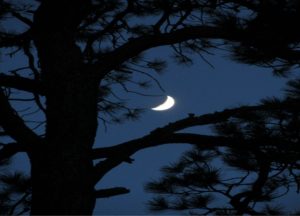“The collective unconscious contains the whole spiritual heritage of mankind’s evolution born anew in the brain structure of every individual.”
—Carl Jung
 Speaking mostly in Lakota, Medicine Man begins to talk, then chant, then pray, then sing. Others, circled in darkness, echo in response. The heat within the hut quickly intensifies and the sweat comes easily.
Speaking mostly in Lakota, Medicine Man begins to talk, then chant, then pray, then sing. Others, circled in darkness, echo in response. The heat within the hut quickly intensifies and the sweat comes easily.
This ceremony could be taking place one hundred—or four hundred—years ago. My body is covered in sweat, which mixes with the dirt on my hands, arms, legs, and chest. This is a sacred ritual of the Sioux known for generations as “the making of relatives,” and I am fully immersed.
Later that evening as steam dissipates from our bodies into the cool night air of northern Nebraska, my newly anointed brother, Lester Lone Hill, is sitting beside me on a log.
“That medicine man is a ‘trickster,’ ” Lester explains. “He brings humor and the element of surprise into his ceremonies. He likes to keep everything light and entertaining.”
* * *
A week later, back home in Maine, I am reading about indigenous rituals when I come across the “trickster” persona. It turns out he is present in the mythology, folklore, and spirituality of many tribes across the globe. From North America, to Africa, to Australia, the trickster is an honored ceremonial figure. How could the same thematic character manifest globally among disparate cultures separated by oceans and epochs?
Carl Jung, the nineteenth-century Swiss analytical psychologist, understood why.
The answer lies in what he described as the collective unconscious of the human race which represents the cumulative learning of all humans across all human time. It’s the shared experience of humanity, and it’s passed from generation to generation through stories. It also manifests as instincts and intuition in newborns and children. Think of it this way: If you believe that an individual human soul survives a body’s death, then it stands to reason that the collective experiential energy of all human souls survives as well.
Mythology, Jung said, is the expression of this collective unconscious. It’s how we give earthly context to that which we intuitively know in the inner depths of being, where soul resides. That’s why it’s common for the stories and symbols of different cultures to share similar characteristics. The presence of good and evil is one example that appears universally in all mythologies.
The hero archetype also lives in the stories of every human culture. The hero generally starts out as an ordinary person, living an ordinary life. A challenge then arises which disrupts much of what the hero holds dear, forcing him or her to confront their circumstances in a saga that ultimately transforms them into someone different than they were before. The external story, which may feature strange beasts, threatening gods, and foreign lands, is actually an archetypal adventure symbolic of the inner journey of transcending our unconscious fears.
As Jung once said, Your visions will become clear only when you can look into your own heart. Who looks outside, dreams; who looks inside, awakes.
What’s the relevance of this to an essay series devoted to self-awareness, shared leadership, and dispersed power? The answer is that each personal life odyssey is both an individual and a collective experience. What happens to one happens to all. Progress by one is progress for all. As each individual moves his or her karmic energy forward, it becomes a drop of learning in the larger pool of all human experiences.
This is why awareness of our shared humanity is essential. Your experiences, however trivial they may feel, ultimately impact the entire trajectory of humanity through our shared collective unconscious. And this is why we must create the change we wish to see by working first on ourselves.
All human journeys matter and this is where love comes in. We must aspire to bring unconditional love (acceptance of people as they are) into our daily lives. Each seemingly ordinary shift at work and each “chance” encounter with a stranger is never really just that. It’s more. It’s always more. Every moment yields another journal entry into the collective unconscious of humanity, which ultimately determines both our personal and shared trajectory across space and time.
In the end we rise, plateau, or fall together.
“I am not what happened to me, I am what I choose to become.”
—Carl Jung